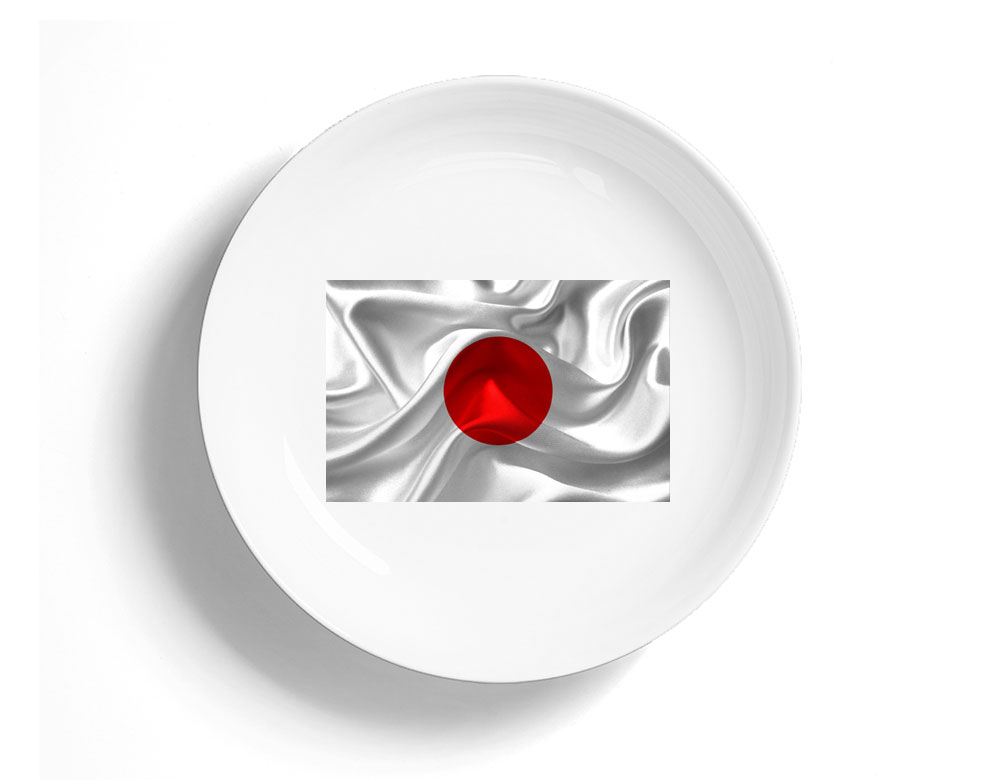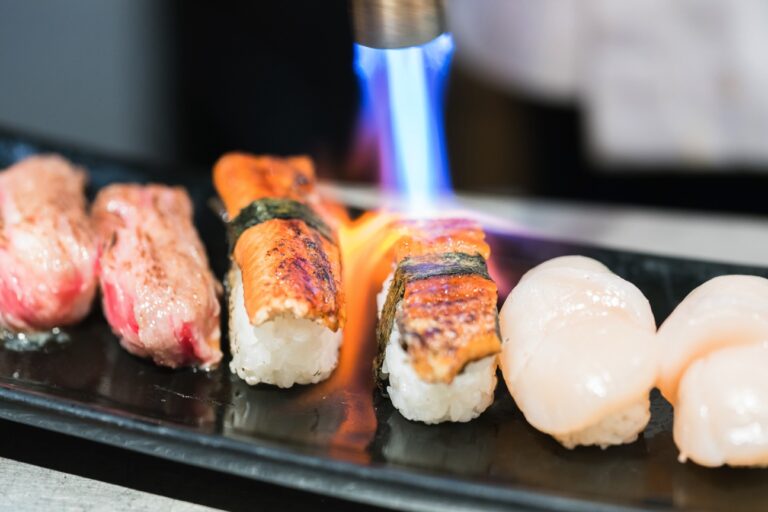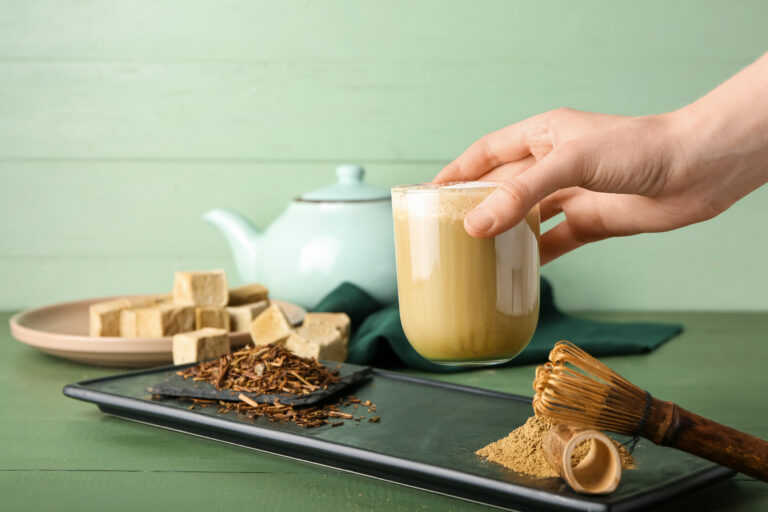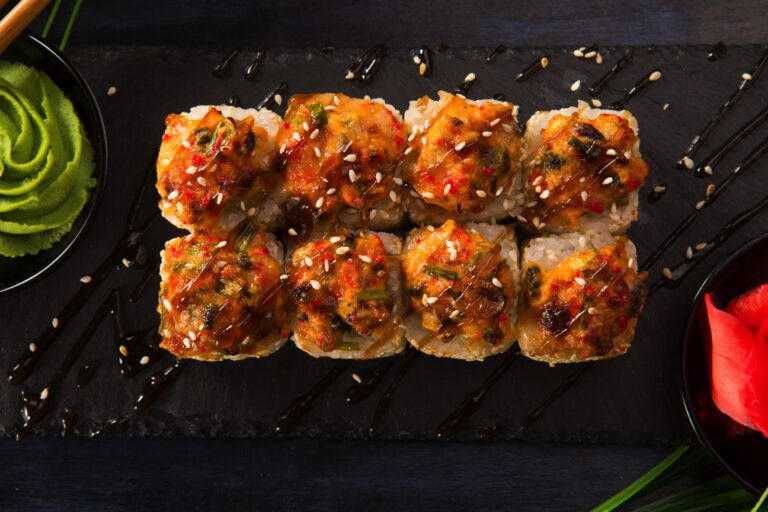
Like Japanese food? Well, with all the Japanese restaurants you’ll be visiting in your lifetime, it would be worthwhile to learn some basic Japanese food terms.
Japan is an Asian island nation off the eastern coasts of Russia, Korea and China. Since it is geographically separated from nearby countries, Japan has a very distinct culture and cuisine.
Japanese cuisine
Japanese cuisine is generally known to be light and healthy as it uses plenty of fresh fish, meats and vegetables. It also sparingly uses dairy products and red meats. The overall flavor profile of Japanese food is salty, umami, spicy and sweet evidenced by its use of shoyu (Japanese soy sauce), miso (fermented soybeans), wasabi and mirin.
Japanese take great pride in using quality ingredients and in the presentation of their food. Japanese food is art.
Sushi is widely considered to be the defining food of Japanese cuisine. The use of quality ingredients is imperative as the fish is eaten raw and the rice must be prepared in a specific manner. The presentation is neat and precise. The best sushi chefs in the world spend decades honing their craft.
While sushi is very popular internationally, there is much more to Japanese food than just raw fish and rice. Hot cooked foods such as ramen (noodle-filled soup), yakitori (grilled skewered chicken), katsu (fried panko-coated meat) and shabu-shabu (hot pot) are also widely eaten in Japan. Tsukemono (pickled vegetables) is a common side dish. Japanese wagyu is an umami-rich steak that undergoes a rigorous, highly regulated process of proper cow treatment and is one of the most sought-after meats in the world.
Japanese food terms
Expand your international dining vocabulary with these basic food-related words translated from English to Japanese.
meat – 肉 (niku)
- pork – 豚肉 (butaniku)
- beef – 牛肉 (gyūniku)
poultry – 家禽 (kakin)
- turkey – 七面鳥 (shichimenchō)
- duck – アヒル (ahiru)
- chicken – チキン (chikin)
seafood – シーフード(shīfūdo)
- fish – 魚 (sakana)
- shrimp – エビ (ebi)
- oyster – カキ (kaki)
- shellfish – 貝 (kai)
meatless/no meat – お肉なし(o niku nashi)
- vegetables – 野菜 (yasai)
- fruits – フルーツ (furūtsu)
- eggs – 卵 (tamago)
- tofu – 豆腐 (tōfu)
- nuts – ナット (natto)
- vegetarian – ベジタリアン (bejitarian)
- vegan – ビーガン (beegan)
drinks – ドリンク (dorinku)
- water – 水 (mizu)
- alcohol – アルコール (arukōru)
- beer – ビール (beeru)
- wine – ワイン (wain)
other eating/dining-related terms
- yes – はい (hai)
- no – 番号 (bangō)
- good – 良い (yoi)
- yummy – おいしい (oishī)
- eat – 食べる (taberu)
- cook – クック (kukku)
- I’m hungry – お腹が空きました (onaka ga akimashita)
- I’m full – おなかいっぱい (onaka-ippai)
- more – もっと (motto)
- less – もっと少なく(motto sukunaku)
- only – のみ (nomi)
- please – お願いします (onegaishimasu)
- thank you – ありがとうございました (arigatōgozaimashita)
- baked – 焼きました (yakimashita)
- fried – 揚げ物 (agemono)
- grilled – グリル (guriru)
- roasted – ロースト(rōsuto)
- steamed – 蒸し(mushi)
- hot – ホット(hotto)
- warm – 暖かい (attakai)
- cold – コールド (kōrudo)
- bitter – 苦い (nigai)
- salty – 塩辛い (shiokarai)
- spicy – 辛い (tsurai)
- sweet – 甘い (amai)
- allergic – アレルギー (arerugī)
- restroom – トイレ (toyreh)
Japanese food to try
- omurice – Japanese omelette with rice and ketchup
- mochi – Japanese dessert made of glutinous rice
- Japanese cheesecake – sponge cake-like dessert
- Japanese soufflé pancakes – thick airy pancakes
- okonomiyaki – savory Japanese pancakes
- oshizushi – sushi cubes
- shabu-shabu & sukiyaki – Japanese hot pot
- takoyaki – octopus meatballs
- yakiniku – Japanese BBQ
Interested in learning about other cuisines around the world? Discover food terms from other countries here.











